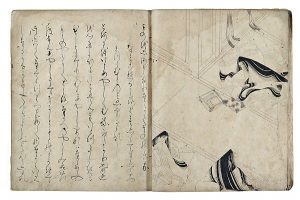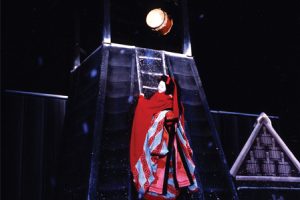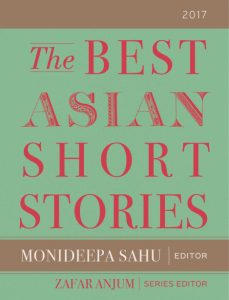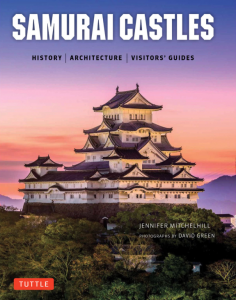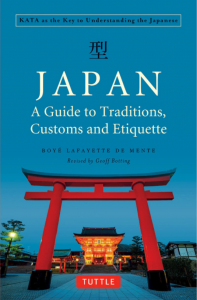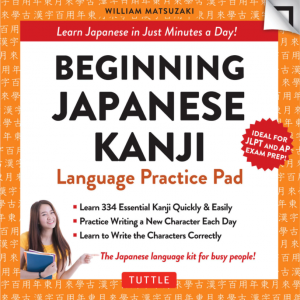Todd Jay Leonard to speak at Japan Writers Conference
Posted by Tom Baker.
JET alum Todd Jay Leonard will be among nearly 50 published writers making presentations at this year’s Japan Writers Conference (Oct. 12-13 in Tokyo). Here’s the official description of his talk:
“Publishing in the EFL Market in Japan: Four Perspectives on How to Make your Proposal Count”
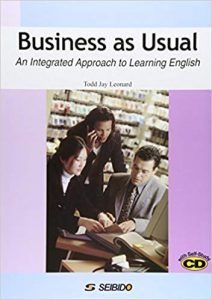 Short lecture with Q & A
Short lecture with Q & A
This presentation will outline the current publishing market in Japan for EFL/ESL textbooks by reviewing the various points of views of the publishing industry. The presenter has published extensively within the ESL/EFL field in Japan and will offer helpful advice to budding authors who wish to pursue projects geared to Japan’s domestic market. What are publishers looking for in the current market? What appeals to editors who ultimately decide? What are the salespeople on the front lines hearing from their market? What must an author do in order to get his/her book published? This presentation focuses on these very questions.
Todd Jay Leonard has been actively involved in book publishing for thirty years and has published twenty books. He lives, writes, and teaches on the southern island of Kyushu, where he is a university professor at University of Teacher Education Fukuoka. He has published extensively in academic journals, magazines, and newspapers on cross-cultural, historical, and Teaching English as a Foreign Language (TEFL) themes.
For more details, visit http://www.japanwritersconference.org/
JQ Magazine: Book Review — ‘Gentle Black Giants’
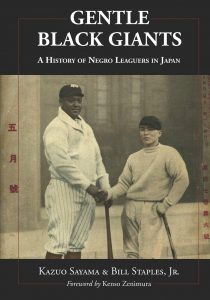
“Gentle Black Giants proves that the Royal Giants’ legacy has lived on in the countless tours taken by American teams to Japan since they first graced Asian shores nearly a century ago.” (NBRP Press)
By Rashaad Jorden (Yamagata–ken, 2008-10; Kochi-ken, 2018-present) for JQ magazine. A former head of JETAA Philadelphia’s Sub–Chapter, Rashaad is a graduate of Leeds Beckett University with a master’s degree in responsible tourism management. For more on his life abroad and enthusiasm for taiko drumming, visit his blog at www.gettingpounded.wordpress.com.
In the 1930s, major leaguers including Babe Ruth and Lou Gehrig went on tours of Japan, dazzling throngs of new fans while dropping nary a match (Gehrig’s group visited the country in 1931 while the Bambino arrived three years later). Those visits by all-star teams were widely credited for generating Japanese enthusiasm for baseball, which in turn helped launch professional baseball in Japan. But many (if not most) baseball fans are unaware the first American professional baseball players to tour Japan were not major leaguers.
A recently expanded book from the Nisei Baseball Research Project delves into a group of Negro Leaguers who sparked the growth of Japanese professional baseball. Gentle Black Giants: A History of Negro Leaguers in Japan explores the tours taken by the Philadelphia Royal Giants that contributed to the development of baseball in the country. Co-authored by Kazuo Sayama and Bill Staples, Jr. (the former is a Japanese baseball historian, the latter is a baseball researcher), Gentle Black Giants was first published in 1986, which coincided with the 50th anniversary of the birth of Japanese pro baseball.
At first glance, it’s apparent that Gentle Black Giants resembles a victorious baseball squad as numerous contributors pitched in to create an extensive resource about the link between the Negro Leagues and Japan. While the cover suggests a collaboration between Sayama and Staples (Sayama penned the original version of the book in Japanese while Staples took charge of the English translation), several editors and authors collaborated to create this new edition.
JQ Magazine: Nippon in New York — Genji at the Met, Perfume Returns, Sailor Moon on Broadway
By JQ magazine editor Justin Tedaldi (CIR Kobe-shi, 2001-02). Justin has written about Japanese arts and entertainment for JETAA since 2005. For more of his articles, click here.
Stay warm this winter with some hot local events, from live showcases that will transport you to another time and place, some new anime screenings, and a 2.5D musical performance you won’t want to miss.
This month’s highlights include:
Now through June 16
The Tale of Genji: A Japanese Classic Illuminated
Metropolitan Museum of Art, 1000 Fifth Avenue
$12-$25
This is the first major loan exhibition in North America to focus on the artistic tradition inspired by Japan’s most celebrated work of literature, The Tale of Genji. Written by Murasaki Shikibu, a lady-in-waiting in the early eleventh-century imperial court, and often referred to as the world’s first psychological novel, the tale recounts the amorous escapades of the “Shining Prince” Genji and introduces some of the most iconic female characters in the history of Japanese literature. Covering the period from the eleventh century to the present, the exhibition features more than 120 works, including paintings, calligraphy, silk robes, lacquer wedding set items, a palanquin for the shogun’s bride, and popular art such as ukiyo-e prints and modern manga. Highlights include two National Treasures and several works recognized as Important Cultural Properties. For the first time ever outside Japan, rare works are on view from Ishiyamadera Temple—where, according to legend, Shikibu started writing the tale.
March 22-23, 7:30 p.m.
Akiko Kitamura’s Cross Transit
Japan Society, 333 East 47th Street
$30, $25 members
How can Cambodia’s past be preserved through the human body? Akiko Kitamura, internationally acclaimed Japanese dancer and founder/former choreographer of Leni-Basso dance company, tackles this challenge together with Cambodian visual artist/photographer Kim Hak. Ambitious yet poetic, Cross Transit is a multimedia dance piece in which Hak’s video, photos, voice and personal experiences intertwine with Kitamura’s bold, progressive choreography. A MetLife Meet-the-Artists Reception follows the March 22 performance, with an artist Q&A following the March 23 performance.
March 29-30
Pretty Guardian Sailor Moon: The Super Live
PlayStation Theater, 1515 Broadway
$30-$75
See Sailor Moon and her friends fight the forces of darkness—live on stage! Directed and choreographed by Takahiro (Madonna’s Sticky and Sweet Tour) with book by Akiko Kodama (Takarazuka Revue Company), and music by Hyadain (pop groups Momoiro Clover Z and AKB48), The Super Live is the first time that Sailor Moon (one of the most popular anime and manga heroines of all time, generating $5 billion in sales) comes to the New York stage in celebration of its 25th anniversary. These special performances (three in total) marks the first time a 2.5D Musical will be on an American stage. 2.5D Musicals, which began around 2000, are based on popular contemporary Japanese culture: manga comics, anime and video games. Presented in Japanese with English supertitles.
JQ Magazine: Nippon in New York — ‘Alita: Battle Angel,’ ‘Urusei Yatsura’ Returns, Puppet Theatre
By JQ magazine editor Justin Tedaldi (CIR Kobe-shi, 2001-02). Justin has written about Japanese arts and entertainment for JETAA since 2005. For more of his articles, click here.
Stay warm this winter with some hot local events, from live showcases that will transport you to another time and place, some new anime screenings, and a theatrical performance you won’t want to miss.
This month’s highlights include:
Now playing
Various locations/prices
The number one movie in the world! From visionary filmmakers James Cameron (Avatar) and Robert Rodriguez (Sin City) comes Alita: Battle Angel, an epic adventure of hope and empowerment based on the acclaimed manga series by Yukito Kishiro. When Alita (Rosa Salazar) awakens with no memory of who she is in a future world she does not recognize, she is taken in by Ido (Christoph Waltz), a compassionate doctor who realizes that somewhere in this abandoned cyborg shell is the heart and soul of a young woman with an extraordinary past. As Alita learns to navigate her new life and the treacherous streets of Iron City, she discovers a clue to her past through unique fighting abilities that those in power will stop at nothing to control.
Tuesday, Feb. 19
$19.99 MSRP
After decades out of print, the hilarious manga classic that launched the career of Rumiko Takahashi (Ranma ½, Inuyasha) returns in all-new deluxe English editions! Beautiful space alien princess Lum invades Earth on her UFO, and unlucky Ataru Moroboshi’s world gets turned upside down! Will Lum become Earth’s electrifying new leader? Or will Ataru somehow miraculously save Earth from space alien onslaught? In a high-stakes game of tag, Ataru must touch Lum’s horns in ten days—or aliens will take over the earth! As it turns out, the game of tag is only the beginning of Ataru’s troubles, as he continues to attract strange encounters with otherworldly beings like beautiful snow spirit Oyuki and the sexy crow goblin Princess Kurama!
Friday, Feb. 22, 7:00 p.m.
Saint Vitus, 1120 Manhattan Avenue (Brooklyn)
$20-$70
Fluent in Japanese, this ex-Cacophony/Megadeth axeman’s overwhelming love of Japanese music and the Japanese language found him moving to Tokyo in 2003. It is there where his career took off in very unexpected ways. Currently he is a constant fixture on Japanese television (appearing on hundreds of network programs of all types, and as the face of long running campaigns for Fanta/Coca Cola, Sumitomo Bank, Suntory etc.), as well as appearing in major motion pictures. He is also the author of two hardcover books in Japanese detailing his unusual views on the current Japanese music scene, as well as two best-selling manga-related books, which are both in their eighth editions now. Catch Friedman as he supports his latest release, One Bad M.F. Live!!, with his band featuring Kiyoshi (bass), Jordan Ziff (guitar), and Chargeeee (drums). Featuring support by Immortal Guardian.
Feb. 28-March 2, 7:30 p.m.
Hachioji Kuruma Ningyo Puppet Theater
Japan Society, 333 East 47th Street
$40, $33 Japan Society members
Koryu Nishikawa, the fifth grand master of Hachioji Kuruma Ningyo Puppet Theater, returns to NYC (and marking the first bunraku performance at Japan Society in a decade) with four female-focused stories from classic literature: Kuzunoha, about a mother’s undying love for her child; Date Musume Koi Higanoko, which depicts a woman’s heroic sacrifice for her lover; Tsuri On’na, a comical piece about “fishing” for a wife; and Yugao, a new work from Nishikawa based on a story from The Tale of Genji, in which the jealous spirit of one of Genji’s lovers possesses a young woman he’s courting. Kuruma ningyo, literally meaning “puppets on wheels,” refers to the company’s unique technique in which the puppeteer sits atop a three-wheeled dolly, adding an element of dynamism and power to each character. Don’t miss this rare chance to see a full-scale production with chanters and shamisen players. Performed in Japanese with English titles. A pre-performance lecture begins one hour prior to the start of the performance. The Feb. 28 performance is followed by a MetLife Meet-the-Artists Reception.
Want to stay in the loop on future events? Follow Justin on Facebook and Twitter.
JQ Magazine: Book Review — ‘Dragon Quest Illustrations: 30th Anniversary Edition’
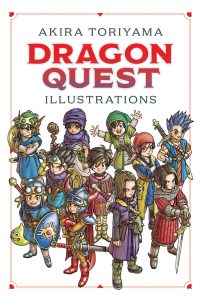
“Packed with over 500 iconic hand-drawn illustrations, this handsome, 240-page hardcover edition is a testament to the artist who helped set the visual standard for RPGs, raising the bar impossibly higher with each release.” (VIZ Media)
By JQ magazine editor Justin Tedaldi (CIR Kobe-shi, 2001-02). Justin has written about Japanese arts and entertainment for JETAA since 2005, and is eagerly awaiting the 30th anniversary edition of All Purpose Cultural Cat Girl Nuku Nuku. For more of his articles, click here.
In the summer of 1988, the “World News” page in the debut issue of Nintendo Power magazine reported: “Ninjas and Kung-Fu Masters are no longer heros [sic] to Japanese players since they are now being replaced by warriors and sorcerers who bravely confront dragons with their swords and shields.”
With this mind-blowing description, my eight-year-old self was introduced to the world of Dragon Quest.
With over 71 million copies sold, this landmark video game series published by Enix (now Square Enix) is still going strong, with eleven main titles and thirty overall, securing a legacy that spans at least three generations. While role-playing games like Dungeons & Dragons and Ultima existed long before game consoles invaded our homes, DQ was the one that rewrote the book and kept adding chapters that everyone from Final Fantasy to Pokémon copied from, long after its initial release in Japan in 1986 (and in the U.S. as Dragon Warrior in 1989).
Ironically, those other series are probably better known in the West, likely because for years Dragon Warrior lacked the “star power” associated with one man whose fame in Japan easily rivaled any game: Akira Toriyama. As the creator/illustrator/genius behind the back-to-back manga smashes Dr. Slump and Dragon Ball, Toriyama was coaxed by his trend-savvy editor to lend his talents to a new sword-and-sorcery title, marking a profound transformation (and future synergy) between the manga and gaming worlds. After DQ, nothing would ever be the same.
JQ Magazine: Book Review — ‘Perfume’s “GAME”’
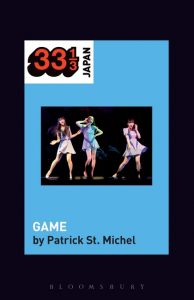
“To call Perfume’s GAME a ‘deep dive’ is both an understatement and compliment. From its very first chapter, St. Michel’s decade of experience writing about music shines.” (Bloomsbury Academic)
By Greg Beck (Hiroshima-ken, 2006-11) for JQ magazine. Greg is a writer, producer, home brewer, and Social Coordinator for JETAA Southern California and Arizona. A former news producer for Tokyo Broadcasting System in New York, he currently works freelance in Los Angeles. For more cinema reviews, follow him on Twitter at @CIRBECK #MovieReview.
If you were to ask me prior to writing this, I vaguely recalled Perfume as some heavily autotuned “girl group” from Hiroshima. Now that I have read Perfume’s GAME, all of that has changed.
Written by JET alum Patrick St. Michel (Mie-ken, 2009-11) and released earlier this year, this insightful work of nonfiction is part of a series called 33 1/3 Japan, also related to a larger, global series of short, music-based books sharing the 33 1/3 title. This book specifically goes beyond simple fandom, providing a master class on the early-to-sophomore career of the pop group Perfume, and how their album GAME would become an important influence in popular music on the international level.
To call Perfume’s GAME a “deep dive” is both understatement and compliment. From its first chapter, St. Michel’s decade of experience writing about music shines. That’s an extremely difficult task for the written word, given we perceive music using a different sense entirely. Descriptive prose does an excellent job identifying and elucidating songs and their smaller components. St. Michel starts with a modest introduction of his personal discovery of Perfume and how it helped him connect to his Japanese community, which for any JET alum should feel familiar, if not nostalgic. Next, he tells the story of the members of Perfume and their humble beginnings. Had the rest of the book been solely focused on their music, it would only be worth reading if you were already a diehard fan, but the author does much more.
JQ Magazine: Book Review — ‘Japanese Cooking with Manga’

“Japanese Cooking with Manga is an entertaining introduction to the world of Japanese food, and an approachable book for those interested in learning more about Japanese food culture.” (Tuttle Publishing)
By Alexis Agliano Sanborn (Shimane-ken, 2009-11) for JQ magazine. Alexis is a graduate of Harvard University’s Regional Studies-East Asia (RSEA) program, and currently works as a program coordinator at the U.S.-Asia Law Institute of NYU School of Law. Additionally, she is an artist and independent filmmaker, currently working on a documentary about food education in Japan entitled Nourishing Japan.
Tuttle’s latest cookbook, Japanese Cooking with Manga, captures the ethos of creating food which suits the place you live. This quirky read was written by the Gourmand Gohan team comprised of Spaniards Alexis Aldeguer and Ilaria Mauro and Japanese-living-in-Barcelona “Maiko-san,” highlighting the universal love of Japanese food and its adaptations around the globe.
Created to be part comic book and part recipe book, this is a cookbook that you “read,” filled with colorful and humorous visual explorations of preparing Japanese food. Drawn in an artistic style more reminiscent of Tintin than Totoro, the trio guides us through visuals of chopped ingredients and simmering pots culminating in the completed meal. In truth, it would be difficult to consult the book while cooking (there’s something to be said for a more traditional layout); it’s more coffee table or bedside reading. Nevertheless, readers, especially those with an appreciation for comics, will likely enjoy this book.
In addition to recipes and narrative, the writers take care to provide background information, context and history to the world of Japanese cuisine—such as the importance of seasonal ingredients, the history of sushi, or how to identify fresh fish. For anyone embarking and revisiting the world of washoku, these principles are good reminders of the foundation to the cuisine and culture.
Tom Baker to discuss book reviewing at Japan Writers Conference
Posted by Tom Baker
The Japan Writers Conference, a free annual event that invariably attracts at least a few JETs, will be held at Otaru University of Commerce on Oct. 13 and 14. One of the JETs giving presentations this year will be Tom Baker (who wrote this post, along with a recent Japan News article previewing the event). Here’s the official description of his presentation:
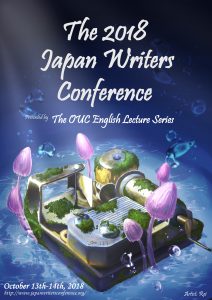 Anatomy of a Book Review
Anatomy of a Book Review
Short lecture with Q&A
“Anatomy of a Book Review” will explain how a book review is structured and what elements it should include. The key is to not merely indulge in one’s own reaction to a book, but to focus on being an informative and trustworthy guide for other readers.
A book review is like a book in miniature. It must grab the reader’s attention at the beginning, hold their interest through the middle, and leave them feeling satisfied to have spent their time on it by the end. But what goes into each of those parts and how do you put them together?
“Anatomy of a Book Review” will pin several reviews to the dissecting table to look at what parts they include and what function those parts serve. Vital organs include a catchy lead, facts about the author, and at least a sketch of the context in which the book appears.
Reviews of fiction and nonfiction will be compared. For any type of book, reviewers of course want to express their opinions. This presentation will focus on doing so in a way that fulfills the reviewer’s mission to be a concretely helpful guide for other readers.
Tom Baker has written and published about 300 book reviews over the past 20 years. He edited the Books page of The Daily Yomiuri, which is now The Japan News, where he edits the Bound to Please column. He was the ACCJ Journal’s book columnist for two years.
Holly Thompson to speak about picture books at Japan Writers Conference
Posted by Tom Baker
The Japan Writers Conference, a free annual event that invariably attracts at least a few JETs, will be held at Otaru University of Commerce on Oct. 13 and 14. One of the JETs giving presentations this year will be poet and novelist Holly Thompson, who first came to Japan in connection with the pre-JET MEF program. She will present “Half the Story: Writing for the Picture Book Market.” Here’s the official description of her presentation:
Short Lecture, Exercises and Q&A
 Picture book writing is a particular art. Writers of picture book manuscripts must write for page turns and create opportunities for the illustrator—writing just enough to offer possibilities. This session introduces the craft of writing picture books for current English-language picture book markets.
Picture book writing is a particular art. Writers of picture book manuscripts must write for page turns and create opportunities for the illustrator—writing just enough to offer possibilities. This session introduces the craft of writing picture books for current English-language picture book markets.
Writing is only half the story in picture books–images and text interact to tell the story together. So how do we write text without saying too much? Where in our writing should we step aside for the illustrator? And how do we compress stories for the strict count of 32 pages? How can we skill up to craft manuscripts that appeal to editors and art directors for their illustration possibility? This session will explore the anatomy of the picture book as it pertains to writers and offer guidelines for crafting fresh, marketable picture book manuscripts. We’ll examine sample picture books—fiction, nonfiction, poetry—and try some interactive exercises. We will address the current English-language picture book markets and share the gaps, openings and opportunities for writers to get a foot in the door.
Holly Thompson is author of the picture books Twilight Chant; One Wave at a Time, The Wakame Gatherers: verse novels Falling into the Dragon’s Mouth, Orchards, The Language Inside; and the novel Ash. She writes poetry, fiction and nonfiction, is SCBWI Japan Regional Advisor, and teaches at Yokohama City University.
Suzanne Kamata to introduce “Best Asian Short Stories” at Japan Writers Conference
Posted by Tom Baker
The Japan Writers Conference, a free annual event that invariably attracts at least a few JETs, will be held at Otaru University of Commerce on Oct. 13 and 14. One of the JETs giving presentations this year will be Suzanne Kamata, whose story “Monchan” appears in the “The Best Asian Short Stories 2017” anthology. Suzanne will be giving two presentations. Here’s the official description of one of them:
Kitaab Publisher Zafar Anjum and contributor Suzanne Kamata will discuss The Best Asian Short Stories 2017 anthology. Anjum will also talk about other anthologies in the works and publishing opportunities for Japan-based writers and translators in Singapore.
Zafar Anjum, who heads the independent Singapore publishing house Kitaab International, and contributor Suzanne Kamata, will introduce The Best Asian Short Stories 2017 anthology. In addition to the anthology series, Kitaab has published novels, short story collections and stories for children. Anjum will also discuss his vision for Kitaab and publishing opportunities for Japan-based writers and translators. There will be a question and answer period.
Zafar Anjum is a writer, publisher, and filmmaker who lives and works in Singapore. His books include Kafka in Ayodhya and Other Short Stories (Kitaab International, 2015), Iqbal: The Life of a Poet Philosopher and Politician (Random House India, 2014), and The Singapore Decalogue (Red Wheelbarrow, 2012). He is the founder-editor of Kitaab, an online journal and publishing company that promotes Asian writing in English.
Suzanne Kamata is the author or editor of ten published books including, most recently Screaming Divas (Simon Pulse, 2014), The Mermaids of Lake Michigan (Wyatt-Mackenzie Publishing, 2017) and A Girls’ Guide to the Islands (Gemma Open Door, 2017). Her story “Mon-chan” was selected for inclusion in The Best Asian Short Stories 2017 anthology. She is an Associate Professor at Naruto College of Education.
JQ Magazine: Book Review — ‘Amy’s Guide to Best Behavior in Japan: Do It Right and Be Polite!’

“For JETs and others who have lived and worked in Japan, many of these rules and customs might seem very familiar and would only serve as a refresher. Yet Chavez does an excellent job of providing a clear summary of many aspects of Japanese culture—all in 144 pages.” (Stone Bridge Press)
By Andy Shartzer (Shizuoka-ken, 2014-16) for JQ magazine. Andy graduated from the University of Virginia with a degree in chemical engineering, and currently works for JETRO New York. He is also the Community Development Chair for JETAA New York.
The best part about world travel is the chance to step outside of our comfort zones and sometimes monotonous day-to-day routines to gain new and different perspectives of the world. Oh, and eat lots of amazing food, right? Not just that? Okay. Sorry, that was my stomach talking there.
In all seriousness, the chance to interact and learn from locals is an opportunity travelers should make the most of. But what if you haven’t brushed up on all the rules, customs, and etiquette of the country you’re visiting? And what if that country is Japan? And what if you’re boarding the plane now? Eesh. Well, instead of binging on reruns of Marvel movies, Amy Chavez has you covered with her new book, “Amy’s Guide to Best Behavior in Japan: Do It Right and Be Polite!” Chavez, a 25-year resident of Japan and tourist adviser who lives on Shiraishi Island (population: 600) in the Seto Inland Sea, provides a quick, easy-to-read overview of how to fully enjoy your experience in Japan and best incorporate the complexities of Japanese customs and etiquette into your homestay, study abroad, or quick jaunt to Japan. With some strong support from the educational “Amy Cat” (illustrated by Jun Hazuki), this 144-page book is the perfect reading material for your 15-hour flight.
For JETs and others who have lived and worked in Japan, many of these rules and customs might seem very familiar to you and would only serve as a refresher. Yet Chavez does an excellent job of providing a clear summary of many aspects of Japanese culture — not easy to do in 144 pages. For example, this author never quite learned the proper protocol for praying at Buddhist temples and Shinto shrines, so the guidelines provided in this book (with pictures!) were very helpful. Even if you have spent a year or more as a resident in Japan, Chavez includes enough topics to ensure you learn a new thing or two — like a whole section on how to use Japanese squat toilets (Ooooh, you face the wall…who would’ve thought!).
JQ Magazine: Book Review — New from Tuttle (Summer 2018)
By Rashaad Jorden (Yamagata-ken, 2008-10) for JQ magazine. A former head of the JETAA Philadelphia Sub–Chapter, Rashaad is a graduate of Leeds Beckett University with a master’s degree in responsible tourism management. For more on his life abroad and enthusiasm for taiko drumming, visit his blog at www.gettingpounded.wordpress.com.
Tuttle Publishing has recently released two books: one showcases the capital of Japan at its hippest and most colorful, while the other is dedicated to the traditional splendor of its castles.
“Capital of cool” sounds like an appropriate phrase to describe the host of the next Olympics. Rob Goss’s largely pictorial tribute to Tokyo certainly succeeds in making potential visitors to the capital salivate.
Subtitled Tokyo’s Most Famous Sights from Asakusa to Harajuku, Goss’s work doesn’t intend to be the typical travel guide containing useful recommendations about transportation and accommodation. Most importantly for readers, Goss provides extensive information (much of it historical) about Tokyo’s most popular tourists areas. Of course, the fun of a Tokyo trip isn’t just limited to Shibuya, Ginza, Harajuku, and the rest Goss includes segments devoted to common day trip excursion sites like Kamakura, Nikko and Yokohama.
While the photographs are obviously the first thing that jumps out at readers—indeed, Ross scores at portraying Tokyo as a youthful, vibrant city—the images are definitely not the only useful tool for prospective visitors. Several maps appear in the book, displaying places of interest that even seasoned travelers may not be aware of.
Castles are lot more than opulent fortresses to gaze at—these palaces represent an integral facet of Japanese feudal and military history.
That’s the biggest takeaway readers will get from Jennifer Mitchelhill’s Samurai Castles. Her work (complemented by photographs from David Green) provides a comprehensive introduction to two dozen of Japan’s most prominent castles. History buffs are treated to more aforementioned locales as the author then lists Japan’s 100 most important castles.
However, before seeking out what venerable fortresses might be in an off-the-beaten prefecture, the author expounds on their rich history (whose use was first recorded in an eighth-century work entitled Nihon Shoki). Architecture aficionados will appreciate the chapter dedicated to such structures, and if you’re motivated to visit one of Japan’s more prestigious castles, you’ll have some idea what you’re looking at, since Mitchelhill supplies meticulous information about each castle, as well as practical tips for prospective visitors.
For more information, visit www.tuttlepublishing.com.
For more JQ magazine book reviews, click here.
JQ Magazine: Book Review — ‘My Year of Dirt and Water’

“From her pottery classes to family visits, Tracy Franz takes you to a sometimes magical and sometimes complex world, but one very much full in enriching experiences.” (Stone Bridge Press)
By Rashaad Jorden (Yamagata-ken, 2008-10) for JQ magazine. A former head of the JETAA Philadelphia Sub–Chapter, Rashaad is a graduate of Leeds Beckett University with a master’s degree in responsible tourism management. For more on his life abroad and enthusiasm for taiko drumming, visit his blog at www.gettingpounded.wordpress.com.
If you wrote about your year (or more) in Japan, what would you say? What stories would you tell?
Welcome to the world of Tracy Franz. An English teacher at a university in Kumamoto, she welcomes readers to her “year of dirt and water.”
My Year of Dirt and Water (the books takes its title from a line when Tracy asks herself what she hopes to accomplish while trying to recycle those two objects) is a journal-like journey of Tracy’s world. Her JET alumnus husband Koun Garrett Franz (Kumamoto-ken, 1999-01) is spending a year training as a monk in a Buddhist monastery, so Tracy must navigate the complexities of Japanese life feeling like an outsider (she mentions at one point she always feels a distance that prevents her from feeling at ease in the country).
As the book is a diary containing an entry for each day, the content runs the gamut from the mundane to the only-in-Japan moments (such as Tracy’s pottery teacher incredulously responding to the author’s being unaware of her husband’s blood type) to her observations of life in the country (Tracy concludes, to the surprise of no one, that Kyoto is a bit crowded during Golden Week and possibly not the most comfortable destination for those accustomed to the Alaskan countryside) to the creepy (like an eerie night at an onsen with a university colleague).
Of course, a journal may not be an enthralling read for some (My Year of Dirt and Water is divided into four sections each named after a season of the year while the book’s chapters each bear the name of a specific month). Remarkably, a decent portion of the book takes place in the United States, where Tracy spends much of the summer visiting her husband’s family, which has a mother-in-law battling illness.
JQ Magazine: Book Review — ‘A Girls’ Guide to the Islands’
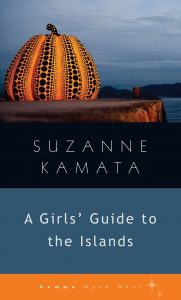
“While the book is largely a ‘what we did from beginning to end’ odyssey, Kamata’s vivid accounts of her journey with her daughter put you alongside them as they soak up culture.” (Gemma Open Door)
By Rashaad Jorden (Yamagata–ken, 2008-10) for JQ magazine. A former head of the JETAA Philadelphia Sub–Chapter, Rashaad is a graduate of Leeds Beckett University with a master’s degree in responsible tourism management. For more on his life abroad and enthusiasm for taiko drumming, visit his blog at www.gettingpounded.wordpress.com.
Exploring local wonders with loved ones can conjure up magical memories—and an enormous sense of satisfaction upon overcoming numerous obstacles.
JET alumna Suzanne Kamata (Tokushima-ken, 1988-90) lived through such experiences, which are recounted in her nonfiction debut, A Girls’ Guide to the Islands. Such a title would indicate a guidebook for female travelers. But a scan of its second paragraph reveals the book is a first person travelogue of the author and her daughter Lilia’s exploration of their corner of Japan. Despite spending most of her life in the countryside, Kamata (author of Gadget Girl and The Beautiful One Has Come) has not just visited some nearby landmarks; she figures playing tourist in several locations would serve as good mother-daughter bonding experiences.
This treats the reader to a journey of art exploration. Lilia loves art and she wants to make a career out of it. Kamata also shares an affinity for art, which makes them perfect travel partners. A Girls’ Guide to the Islands is enhanced by the author’s illumination of the art she sees—such as Yayoi Kusama’s My Eternal Soul, which is painted in vivid colors that are considered unsettling in Japan (the artist’s iconic pumpkin sculpture in the island town of Naoshima also graces the book’s cover)—as well as the works that enthrall her daughter. Fortunately for them (and possibly surprising to some), foreign art from renowned artists was easy to locate in the rural museums they visited. Kamata and Lilia find one of Monet’s most famous paintings and Andy Warhol’s Flowers in Naoshima, as well as other works from other non-Japanese artists.
JQ Magazine: Book Review — New from Tuttle (Spring 2018)
By Rashaad Jorden (Yamagata–ken, 2008-10) for JQ magazine. A former head of the JETAA Philadelphia Sub–Chapter, Rashaad is a graduate of Leeds Beckett University with a master’s degree in responsible tourism management. For more on his life abroad and enthusiasm for taiko drumming, visit his blog at www.gettingpounded.wordpress.com.
Tuttle Publishing has released another selection of Japan-related books, and the following quartet includes works that touch on Japanese etiquette, language study, Okinawan history, and picturesque Kyoto.
Japan: A Guide to Traditions, Customs and Etiquette
While studying Japanese, I learned the term shikata, which is translated as the “way of doing things.” However, as the late lecturer and writer Boyé Lafayette de Mente thoroughly documents, kata represents a lot more than a translation of “form”: It is a concept present in just about every aspect of Japanese society, whether it be the business world, poetry, or sumo. In essence, kata guides the country’s etiquette.
In Japan, the process of accomplishing a goal is just as significant, if not more significant, than the actual result—a notable contrast to the West. De Mente defines kata as the “way things are supposed to be done,” and he educates readers on how the concept has shaped Japan throughout its history and the present.
The author also touches on other cultural differences between Westerners and Japanese (such as communication styles) and people reading the book will probably nod their heads in agreement as they read certain passages, such as “Foreigners can live a lifetime in Japan and not fully understand how the Japanese system works the way it does” and why Japanese often express amazement at foreigners who can utter the simplest Japanese phrase. Japan: A Guide to Traditions, Customs and Etiquette is really an exploration of the Japanese psyche.
If nothing else, you’ll be amazing at how different Japan seems from the West.
Beginning Japanese Kanji: Language Practice Pad
Those seeking an introduction to kanji, or just a way to brush up on them, should turn to William Matsuzaki’s work. The pad is an excellent tool for busy people: The 334 kanji it presents lends itself to a simple, one kanji-a-day memorization for those aiming to study at a relaxed pace. Furthermore, each page contains terms utilizing the featured kanji and tips on how to write its strokes.
The kanji appearing in the pad is really nothing out of the ordinary, as you’ll see them in many (if not most) materials geared toward relatively novice Japanese learners. Adding to the book’s appeal, the inclusion of spaces to write the kanji (as well as sample sentences featuring the characters) is most useful for those looking to bolster their knowledge of the language.

